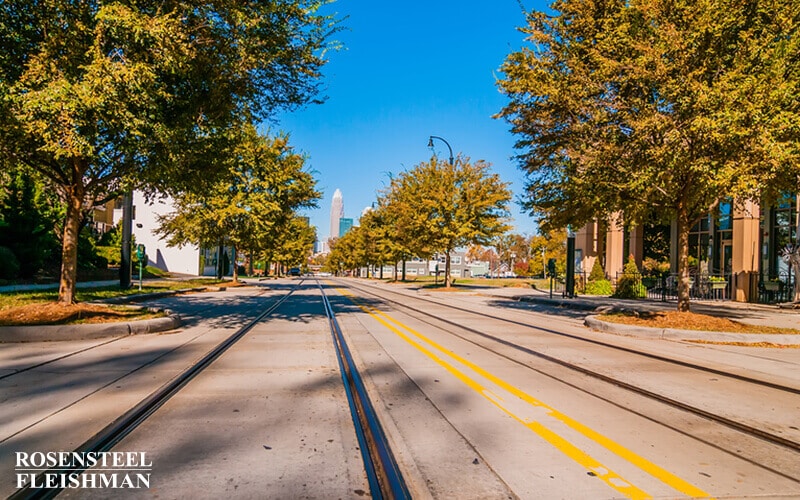According to local news outlets, traffic fatalities in the United States have decreased for the second consecutive year in 2023, even as Americans drove more miles. The National Highway Traffic Safety Administration (NHTSA) revealed that there were 40,990 deaths in motor vehicle crashes last year, marking a 3.6% decline from the 42,514 fatalities in 2022. […]

Sun Glare and the Sudden Emergency Doctrine
WSOC-TV reports that two people were killed after the car they were riding in collided with a tractor-trailer last night. Four people were riding in a Honda going east on Kings Mountain Highway, when the driver tried to make a U-turn to head west. When the car entered the intersection, it was hit by a tractor-trailer. Two of the passengers were killed instantly, and a third is in critical condition. The driver is in the hospital. Troopers theorized that the glare of the sun might have made it difficult for the driver to see, and one trooper noted that this spot has particularly bad visibility when the sun is setting. This accident is tragic, but it also raises the issue of whether a driver can use the excuse of the sun glare to avoid liability for negligence.
To show liability in a negligence case, a plaintiff must show that the defendant breached a duty owed to the plaintiff to exercise reasonable care and that this breach both actually and proximately caused injury to the plaintiff. All motorists have a duty to keep “a reasonable and proper lookout in the direction of travel and see what [they] ought to see.” (Holbrook v. Henley, NC App 1995) Motorists can also have a duty created by statute. If a motorist violates a statute that is enacted for safety purposes (as most traffic laws are), then the motorist is negligent per se, and an injured party must only show that the injuries were proximately caused by the driver’s statute violation.
North Carolina statute G.S. 20-155(b) states that
The driver of a vehicle intending to turn to the left within an intersection or into an alley, private road, or driveway shall yield the right-of-way to any vehicle approaching from the opposite direction which is within the intersection or so close as to constitute an immediate hazard.
Applying this law to Wednesday night’s accident, we would conclude that the driver ought to have seen the tractor-trailer coming down the road and should have yielded the right-of-way to the tractor-trailer and not proceeded into its path.
However, the sudden emergency doctrine can lower the duty of care required from the defendant. The sudden emergency doctrine applies when a person is faced with a sudden emergency that is not brought on by his own negligence. The North Carolina Court of Appeals summarized the doctrine as follows:
An automobile driver, who, by the negligence of another and not his own negligence, is suddenly placed in an emergency and compelled to act instantly to avoid a collision or injury, is not guilty of negligence if he makes such a choice as a person of ordinary prudence placed in such a position might make, even though he made neither the wisest choice nor the one that would have been required in the exercise of ordinary care except for the emergency.
Holbrook v. Henley
A defendant might argue that the blinding glare of the sun created a sudden emergency and he was “compelled to act instantly” and therefore he was not required to make the “wisest choice nor the one that would have been required in the exercise of ordinary care.” There do not appear to be any North Carolina cases which look at the sudden emergency doctrine in connection with the sun glare. However, North Carolina defendants have raised this doctrine as a defense in other weather related accidents.
In the 2007 North Carolina Court of Appeals case, Sobczak v. Vorholt, the defendant and plaintiff were travelling in opposite directions on a two-lane road and the road was slippery in spots with sections of black ice. The defendant’s car slid on some ice, fishtailed, and crashed into the plaintiff’s car. The defendant claimed that he did not see any icy patches in the previously travelled portion of the road and raised the sudden emergency doctrine as a defense. The court was not persuaded by the defendant’s argument and reasoned that because the defendant did observe snow on the road which he knew could turn to ice when it is packed down, the defendant “was on notice of a potential encounter with ice on the road, and... hitting ice as he drove was foreseeable.” Therefore, the defendant
knew or in the exercise of reasonable care should have known that the snow on [the road] could have become ice in some areas, [and] the mere fact that he did not see the icy patch he hit in advance of hitting it is insufficient to establish that he was thereby confronted with a sudden emergency.
In a 2011 case, Lifson v. City of Syracuse and Derek Klink, New York’s highest court refused to excuse a defendant from liability under its “emergency doctrine” when the driver was blinded by sun glare and did not see a pedestrian who he subsequently struck and killed. In Lifson, the defendant was making a left turn at a stop sign. He stated that he noticed that pedestrians were crossing the road but, before turning, he “cleared the road.” When he started turning, he was looking towards the right, and when he went back to look left, he was blinded by the sun “all of a sudden.” He reacted by looking down and to his right, and when he looked back up, he saw the pedestrian, Ms. Lifson, but was unable to avoid hitting her. At trial, judge permitted the jury to be instructed on the emergency doctrine because the sun glare was a sudden and unforeseen occurrence, and the jury found the driver not negligent.
The New York court of appeals summarized the emergency doctrine as follows:
when an actor is faced with a sudden and unexpected circumstance which leaves little or no time for thought, deliberation or consideration, or causes the actor to be reasonably so disturbed that the actor must make a speedy decision without weighing alternative courses of conduct, the actor may not be negligent if the actions taken are reasonable and prudent in the emergency context, provided the actor did not create the emergency.
In its analysis, the New York court relied on a prior New York case in which the court refused to allow an instruction on the emergency doctrine when the defendant was driving in icy conditions and his car slid down a hill, went through a stop sign and hit the plaintiff’s car. The court reasoned that the defendant was aware of the weather for at least two hours and the icy road conditions were not “sudden and unexpected.”
The New York court stated that the sun glare case resembled the case of icy road conditions since “[i]t is well known, and therefore cannot be considered a sudden and unexpected circumstance, that the sun can interfere with one’s vision as it nears the horizon at sunset, particularly when heading west.” The court stopped short of saying that “sun glare can never generate an emergency situation.” However, under the facts of Lifson, it did not.
If you have been injured by a careless driver, contact an attorney at Rosensteel Fleishman Car Accident & Injury Lawyers (704) 714-1450, to discuss your options.
Additional Car Accident Articles
Dealing with the aftermath of a car accident can be overwhelming. It's not just the physical recovery; the legal side of things can feel like a maze. That's where a car accident lawyer in Charlotte, NC, can step in to simplify the process for you. If you're feeling stuck and unsure about what to do […]
Getting into a car accident is one of those things you never really see coming, and it can leave you feeling pretty shaken up, not just physically but also with the maze of legalities to deal with afterward. That's where the importance of finding a reliable car accident lawyer comes into play. Imagine having someone […]
Dealing with the aftermath of a car accident can be overwhelming, to say the least. Suddenly, you're thrust into a world of insurance claims, medical appointments, and potential legal battles, all while trying to recover from your injuries. It's a lot to handle on your own. That's where finding a top-rated personal injury lawyer in […]
